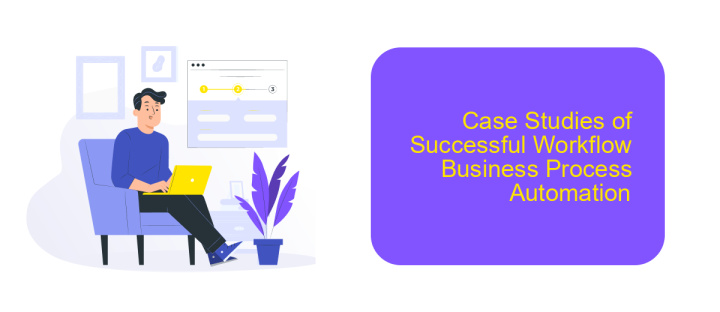Workflow Business Process Automation
In today's fast-paced business environment, Workflow Business Process Automation (BPA) is revolutionizing the way organizations operate. By streamlining repetitive tasks and integrating seamless workflows, BPA enhances efficiency, reduces errors, and frees up valuable human resources for more strategic activities. This article explores the key benefits and implementation strategies of BPA, providing insights into how businesses can leverage automation to stay competitive and agile.
Introduction
In today's fast-paced business environment, organizations are constantly seeking ways to improve efficiency and reduce operational costs. Workflow Business Process Automation (BPA) is a powerful approach that enables businesses to streamline their processes, eliminate manual tasks, and enhance productivity. By automating repetitive tasks, companies can focus on strategic initiatives and drive growth.
- Reduces human error and increases accuracy
- Enhances collaboration and communication
- Speeds up process completion times
- Provides real-time monitoring and analytics
One of the key aspects of BPA is the integration of various systems and applications. Services like ApiX-Drive facilitate seamless integration, allowing businesses to connect different software tools and automate workflows effortlessly. By leveraging such integration platforms, companies can ensure that their processes are running smoothly and efficiently, ultimately leading to better decision-making and improved business outcomes.
Benefits of Workflow Business Process Automation

Workflow Business Process Automation significantly enhances operational efficiency by streamlining repetitive tasks and reducing the likelihood of human error. Automated workflows ensure that processes are executed consistently, leading to improved accuracy and faster completion times. This not only saves valuable time but also allows employees to focus on more strategic activities, driving overall productivity and business growth.
Another key benefit is the seamless integration of various systems and applications, which can be effortlessly achieved using tools like ApiX-Drive. ApiX-Drive facilitates the connection between different software platforms, enabling smooth data transfer and communication. This integration capability ensures that all parts of the business process are synchronized, resulting in better coordination and more informed decision-making. Additionally, automated workflows provide real-time monitoring and analytics, offering valuable insights into process performance and areas for improvement.
How to Implement Workflow Business Process Automation

Implementing Workflow Business Process Automation (WBPA) can significantly enhance efficiency and productivity within an organization. The process involves several critical steps to ensure a smooth transition and effective automation.
- Identify Processes: Begin by identifying repetitive and time-consuming tasks that can benefit from automation.
- Choose the Right Tools: Select automation tools that align with your business needs. For instance, ApiX-Drive can help integrate various applications seamlessly.
- Design Workflow: Map out the workflow, detailing each step and decision point. Ensure it addresses all potential scenarios.
- Test and Refine: Before full implementation, conduct thorough testing to identify any issues and refine the workflow accordingly.
- Train Employees: Provide training sessions to ensure that all team members understand how to use the new automated processes effectively.
- Monitor and Optimize: Continuously monitor the automated workflows and make adjustments as needed to optimize performance.
By following these steps, organizations can successfully implement WBPA, leading to streamlined operations and increased productivity. Tools like ApiX-Drive play a crucial role in simplifying the integration of various applications, making the automation process smoother and more efficient.
Case Studies of Successful Workflow Business Process Automation

Many companies have successfully implemented workflow business process automation to streamline their operations and improve efficiency. For instance, a leading e-commerce company automated its order processing system, reducing manual errors and speeding up delivery times.
Another example is a healthcare provider that automated patient appointment scheduling, which significantly reduced administrative workload and improved patient satisfaction. This was achieved by integrating their existing systems with third-party services using tools like ApiX-Drive.
- A financial institution automated its loan approval process, resulting in faster decision-making and improved customer experience.
- A manufacturing company implemented an automated inventory management system, leading to better stock control and reduced wastage.
- An educational institution used workflow automation to streamline student enrollment and course registration processes.
These case studies demonstrate the transformative power of workflow business process automation across various industries. By leveraging tools like ApiX-Drive for seamless integration, organizations can achieve significant improvements in efficiency, accuracy, and overall performance.
Conclusion
In conclusion, Workflow Business Process Automation (BPA) offers significant advantages for organizations looking to streamline their operations and improve efficiency. By automating repetitive tasks and integrating various business processes, companies can achieve higher productivity, reduce human error, and free up valuable resources for more strategic activities. One of the key benefits of BPA is its ability to provide real-time data and analytics, enabling better decision-making and faster response times to market changes.
Furthermore, tools like ApiX-Drive play a crucial role in facilitating seamless integrations between different software systems, making it easier for businesses to implement BPA solutions. With ApiX-Drive, organizations can effortlessly connect various applications and automate workflows without extensive coding knowledge. This not only simplifies the automation process but also ensures that all systems work harmoniously together, maximizing the overall efficiency and effectiveness of business operations. As technology continues to evolve, embracing Workflow BPA will be essential for staying competitive in today’s fast-paced business environment.
- Automate the work of an online store or landing
- Empower through integration
- Don't spend money on programmers and integrators
- Save time by automating routine tasks
FAQ
What is Workflow Business Process Automation?
What are the benefits of automating business processes?
How do I get started with Workflow Business Process Automation?
What types of business processes can be automated?
How can I integrate different systems for seamless automation?
Routine tasks take a lot of time from employees? Do they burn out, do not have enough working day for the main duties and important things? Do you understand that the only way out of this situation in modern realities is automation? Try Apix-Drive for free and make sure that the online connector in 5 minutes of setting up integration will remove a significant part of the routine from your life and free up time for you and your employees.


